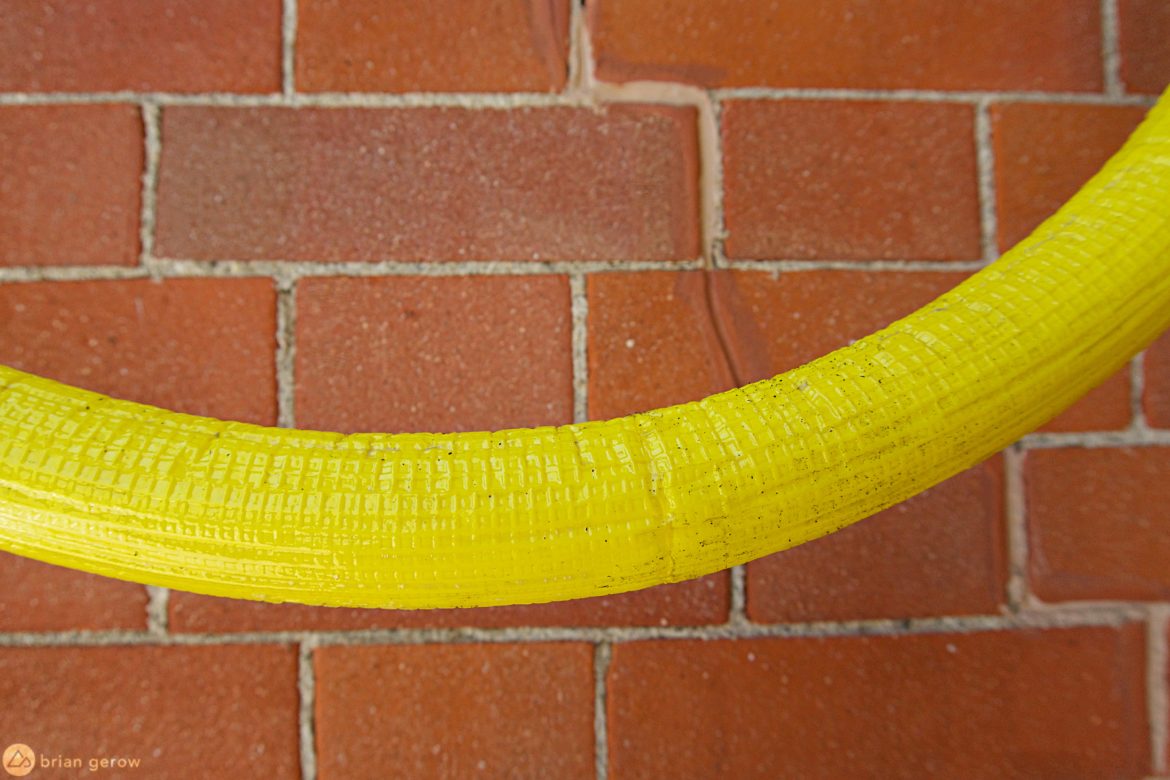Pepi’s Tire Noodle (PTN) inserts were tested and approved by Nino Schurter’s tech team, alongside nearly every other insert in the puncture-prevention business. Schurter found that PTN inserts offer the least rolling resistance and best flat protection of any insert they tested. The inserts also add sidewall stiffness, allowing the world champ to run lower pressure without his tires becoming a mushy mess beneath him.
Why do we need tire inserts now, after so many years without them? Riders and racers are hitting the rocks faster, aboard more capable bikes than they were five to ten years ago, and high pressure isn’t enough to prevent snakebites. Additionally, high pressure makes for a harsh ride and poor traction with most modern tires.
I met with Pepi at the Riva Bike Festival in northern Italy, where he shared the story of Schurter’s analysis, and the process he has gone through to develop his namesake noodles. In short, he has spent several years testing and refining the product to come up with an insert that doesn’t absorb tire sealant, protects rims and rubber, and adds performance to the overall wheel system. He has recently added new models to the lineup and will continue to innovate until he finds the perfect balance of performance and protection.

Peip’s Tire Noodles fit tightly against the rim, pressing out on the tire’s sidewalls for a more supported ride feel.
After our chat, Pepi handed me a pair of his new gravity-focused inserts to test, which are a bit heavier and sturdier than the red “race only” version Schurter uses. Mounting the inserts up wasn’t any more of a hassle than other models, which is to say it was frustrating and required all of my available leverage and hand strength. I put together some tips on mounting inserts that should make things go a little more smoothly for your first try, or you can let the wrench at your local bike shop sort it out.

The insert weighs roughly the same as it did before banging rocks in two different tires, and the yellow casing around the foam remains unscathed.
On the trail

This is the sealed “seam” in the insert’s casing. The PTNs don’t add weight with tape or zip ties like most inserts, so there is no need to rebalance your wheel with weights after mounting these up.
I tested the PTN in my rear tire alone, as I am quite particular about how my front end traction feels, and I rarely pinch flat the front tire. I have heard from a few other riders that the PTN works great in the front as well, and if I give it a shot in the future I will add some notes to this review.
The PTN in my rear tire has endured a few enduro races, two tire changes, and a wheel swap without issue. The foam remains firm and supportive, and somehow there are no cuts in the casing, despite numerous audible rim strikes. One strike, in particular, put a 3cm gash through all but the last thin layer of a Maxxis Aggressor tire, with a downhill casing, and the noodle kept doing its protective thing.
Sizing
- Small – Suitable for tire width 50mm / Rim width 23-32mm
- Medium – Suitable for tire width 60mm / Rim width 27-38mm
- Large – Suitable for tire width 70mm / Rim width 35-48mm
Pricing: about $50 for a pair.

I was stoked to use the PTN insert while testing carbon rims. I am confident that it has saved me from at least one cracked hoop, and likely a few tire punctures.
My bike’s overall ride feel with the PTN in place was improved by allowing lower pressure, and maintaining a consistent sidewall rigidity. I prefer lower pressure than a lot of fellow gravity-gulpers for two reasons: I became accustomed to it while racing cross country in the mud, where low pressure significantly improves traction, and because I like how a slightly squishier tire takes the edge off of harsh trails.
This insert allowed me to run 22psi without fretting punctures or dented rims, while it kept the tire’s casing far firmer than it would be with a flat insert like the Tyreinvader from Effetto Mariposa. The firmer sidewalls were most noticeable when braking hard into bermless turns, where the tire would have started to fold and squirm under the bike without that extra support.

Pepi has two different valves that work with the PTN system. The cutout and holes at the base of the valve press the insert out of the way so that air can pass through smoothly. The black alloy valve has about a third the weight of a traditional tubeless valve, while the chrome option tips the scale like any other.

Nino Schurter leading the 2019 World Cup short track race in Les Gets France.
No comments:
Post a Comment